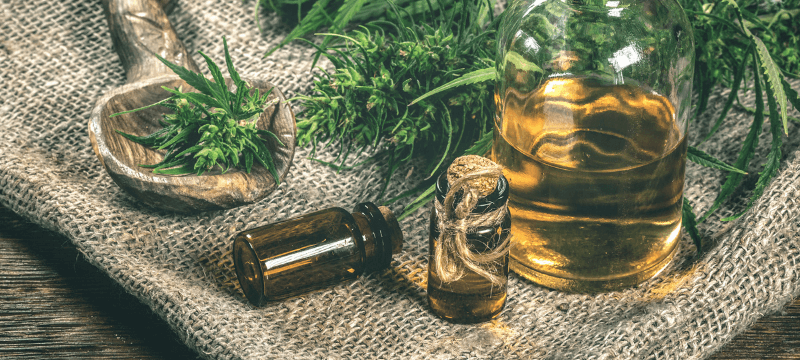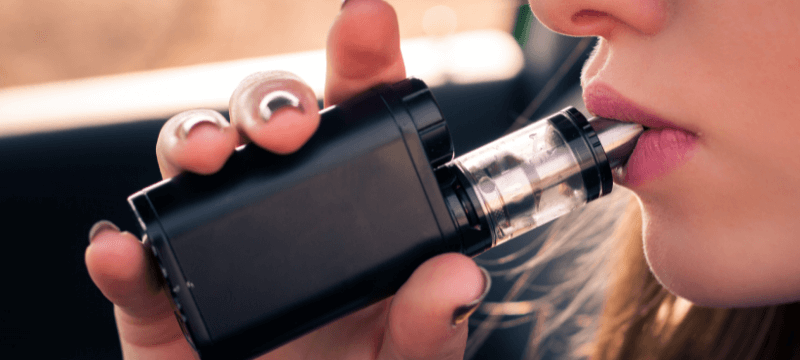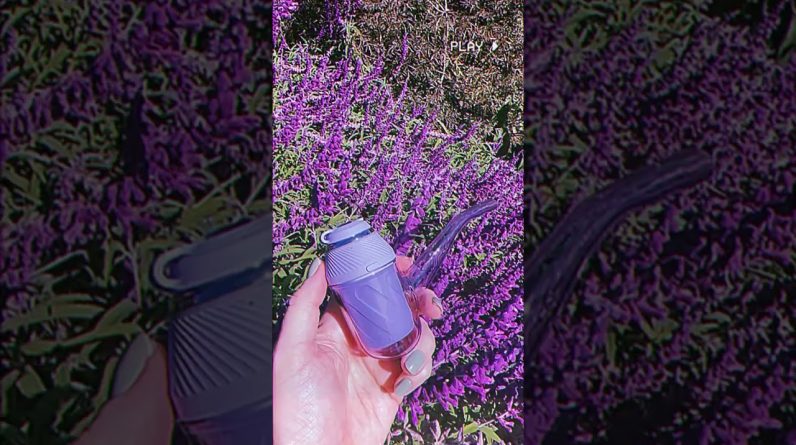If you’re reading this, you’re probably pretty knowledgeable about cannabidiol. But can you honestly, hand over heart, say you know everything there is to know about CBD? Of course not. When it comes to this cannabinoid, there’s always something new coming to light. However, instead of telling you about some new groundbreaking study or discovery, we’re going back to basics. Let’s discuss all the facts, including how to take CBD.
What is CBD used for?
CBD is gaining popularity due to its natural therapeutic properties that are believed to have the potential to help with a number of ailments and conditions, such as:
- Anxiety
- Chronic pain and inflammation
- Epilepsy
- Poor sleep
- Skin conditions
With its meteoric rise in popularity and use, researchers are trying to learn more about CBD. However, there is not enough evidence to back up these health claims, and studies are ongoing. Until then, these claims are purely anecdotal.

That being said, the sheer amount of claims made by people using it, along with the evidence from current and previous studies, shows promise.
Anxiety
Various animal studies suggest that CBD might be able to help with feelings of stress thanks to its antianxiety properties. These properties reduce the adverse effects that anxiety has on the body and mind.
Most evidence from these studies shows that lower doses of CBD can alleviate symptoms of anxiety. However, higher doses had barely any effect. Research published in the Brazilian Journal of Psychiatry clearly illustrates this. In the study, 57 men were given CBD oil or a placebo before a public-speaking event. Researchers analysed the subjects’ anxiety levels by using a variety of measures, such as blood pressure, along with the Visual Analog Mood Scale (VAMS), which is a reliable test used to assess mood states.
The men who took the oil reported less anxiety than men who took the placebo. Those given 300 mg of CBD oil had less anxiety than those given the placebo. The men who were given less than 300 mg or more than 300 mg of CBD oil did not have the same results. 300 mg was the sweet spot in that study.
However, there are very few human studies like this that can prove without a doubt that CBD can help with anxiety.
Chronic pain and inflammation
It has become mainstream to use CBD for chronic pain or inflammation, you probably already know someone who does it. Many people rave about CBD’s effects on pain, but is there any credence to their claims?
There is a common belief in the scientific community that CBD interacts with endocannabinoid receptors in the body. These receptors form the core components of the endocannabinoid system (ECS), which is a cell-signalling system we all have. This system is believed to help regulate functions in the body. The receptors receive signals from the body and assist your cells in responding.
This response suggests CBD has anti-inflammatory and pain-relieving properties that help those suffering from chronic pain.
A review analysing studies carried out between 1975 and 2018 looked at how effective CBD is at helping relieve chronic pain and reducing inflammation. The review concluded that CBD has the potential to effectively manage chronic pain without causing any side effects.
Epilepsy
The most successful studies done on CBD are those concerning CBD use for epilepsy. The Food and Drug Administration (FDA) has approved a prescription drug called Epidolex, which is used to treat rare forms of epilepsy, namely the Dravet and Lennox-Gastaut syndromes and seizures caused by tuberous sclerosis complex.
A recent study showed that 1 in 8 people who take CBD see at least a 50% reduction in seizures, while 1 in 150 experience no further seizures. While experts are still unsure of the exact reason CBD helps prevent seizures, it is thought that it can alter functions in the body that are controlled by the endocannabinoid system by interacting with receptors that will reduce neuron excitability.
Whatever the reason, the strides we are making with Epidolex prove how helpful CBD can be.
Poor sleep
When looking at the potential CBD has to help improve sleep, we first need to consider what causes poor sleep. Most of the time, the most significant factors leading to poor sleep include:
- Anxiety
- Medication
- Fitness
- Caffeine
- Environment
Anxiety is arguably one of the biggest causes of poor sleep and is what many CBD studies concentrate on. As mentioned before, CBD may help alleviate symptoms of anxiety. By relieving anxiety, CBD can also help improve sleep, if anxiety is causing sleeplessness in an individual.
A study done in 2019 researched whether CBD could help people sleep better and feel less anxious. There were 72 volunteers in the study, 47 who had anxiety, and 25 who had insomnia. Every day, the participants were given 25 mg of CBD in capsule form. Patients reported decreased anxiety levels and improved sleep in the first month, with 79.2% reporting lower anxiety and 66.7% reporting better sleep.
Skin conditions
CBD is an antioxidant with anti-inflammatory properties, making it an excellent ingredient in skincare. Various studies show that CBD has the potential to benefit the skin in a number of ways, such as by regulating oil production, reducing inflammation and hydrating skin.
How to take CBD oil
Without further ado, let’s get into how to take CBD. There are various ways you can use CBD, with more ingenious ways being thought up as the years go by. Currently, how to take CBD includes:
- Capsules: CBD is available in capsule form, a fantastic alternative for people who wish to keep their CBD levels consistent. However, when CBD is consumed, it travels through the digestive system, so you may have to wait awhile before feeling any effects.
- Edibles: Edibles are a convenient and discreet way to use CBD. CBD edibles include foods such as gummies, chocolate, brownies, and lollipops. They are best for those with a sweet tooth or those that can’t stand the taste of CBD, as they mask the taste of cannabidiol with a delicious flavour.
- Sublingual products: These CBD products are meant to be absorbed under your tongue. Allowing the CBD to absorb beneath your tongue, rather than letting it pass through your digestive tract, retains more cannabidiol and enables you to see results sooner. Sublingual products include oil, tinctures, sprays and lozenges.
- Topicals: CBD topicals are applied to the skin. They are an excellent option for helping treat uncomfortable skin conditions such as rosacea or eczema.
- Vaping: Vaping allows CBD to enter your bloodstream directly, which means you’ll feel the effects very quickly. However, it can be damaging to lung tissue.

Potential side effects
CBD is generally considered safe. However, there is a slight chance that side effects might occur. When using CBD, especially if it is your first time doing so, keep an eye out for the following
- Changes in appetite
- Diarrhoea
- Dizziness
- Fatigue
- Dry mouth
- Nausea
- Vomiting
It is unlikely that any of these side effects will occur, but it is always best to know what to look out for.
Who can use CBD?
Always speak to your doctor before trying something new such as CBD. While it is mostly safe, it may not be suitable for some people, especially those that are pregnant or breastfeeding, have Parkinson’s or liver disease, or are on medication. Your doctor will be able to advise whether CBD is safe for you to use.
How much can you take?
We always recommend starting with a lower dosage and then working your way up once your body is used to it. Everyone is different, so experiment with different amounts until you find what works for you. We also suggest following the instructions of whichever CBD product you are using.
What to look for when buying CBD products
With countless products available, it can be challenging to decide on one. However, there are ways to make your choice simpler. Here’s what to look for when buying CBD.
Type
There are three different types of CBD, namely:
- Broad-spectrum: Contains a variety of cannabinoids, but usually no THC
- Full-spectrum: Contains all cannabinoids, including THC
- Isolate: Contains pure CBD
To experience all the benefits of CBD, look for products made with full-spectrum or broad-spectrum oil. Studies show that cannabinoids such as CBD and THC work better when used together, thanks to the entourage effect. However, if you’d rather avoid THC altogether, CBD isolate is the one to go for.
Ingredients
Pay attention to the ingredients list, especially if you’re vegan or have allergies. The best CBD products contain organic ingredients and are vegan-friendly.
Third-party lab tested
It is imperative to ensure the CBD product you use has been third-party lab tested, so that you know exactly what is in it. This will give you all the details you need to know about the ingredients. Brands that don’t do third-party lab tests should be avoided. They probably have something to hide and may be lying about their ingredients.
Certificate of Analysis (COA)
Check the Certificate of Analysis (COA) to ensure the product has been adequately tested for contaminants and has the precise amount of CBD and THC mentioned on the label.
Avoid any company that is hesitant or does not willingly provide third-party lab reports.
Key takeaways
There you have it – all the basics you need to know about taking CBD. Hopefully, all your questions have been answered. If not, take a look through our website. You’re bound to find answers to any questions there.





